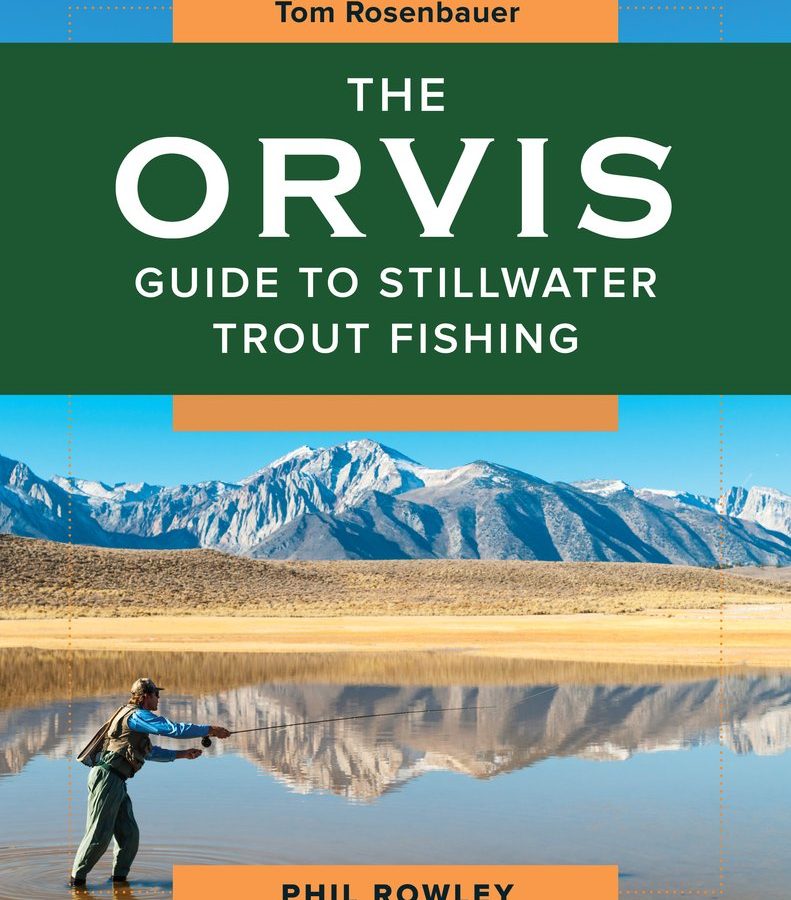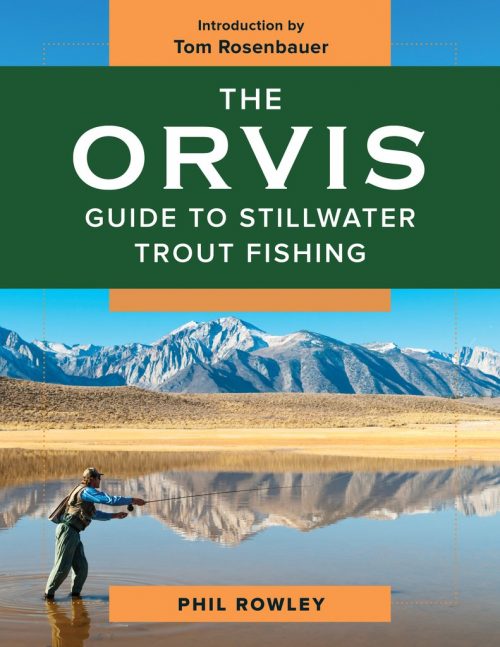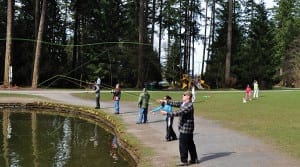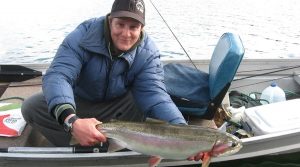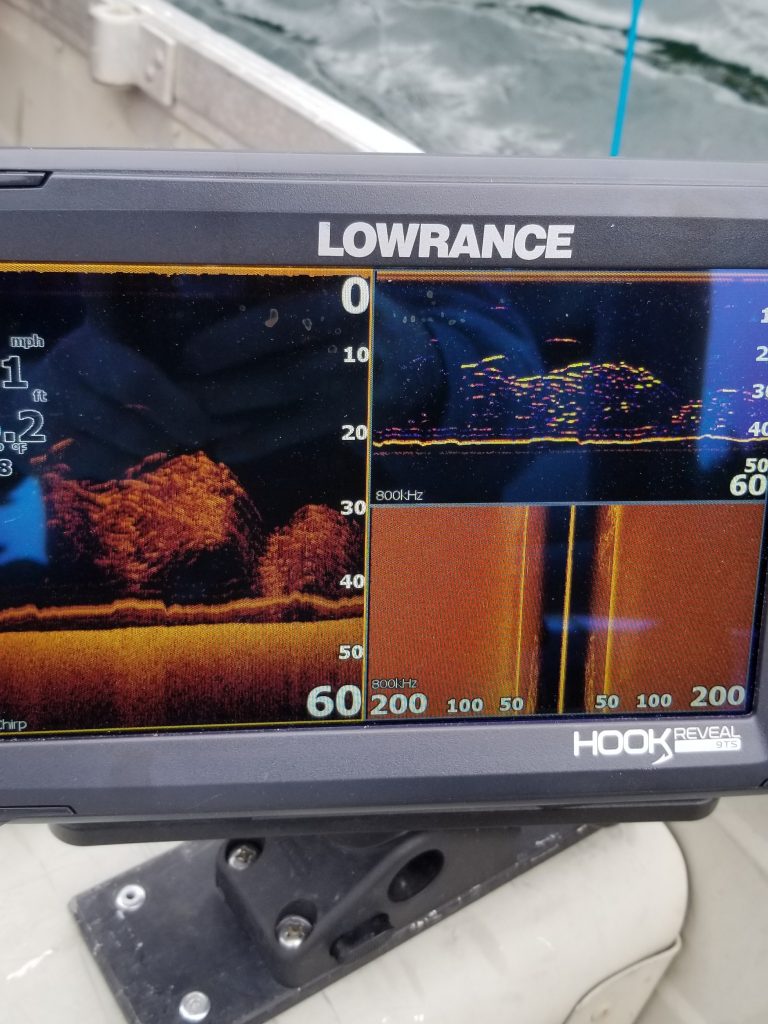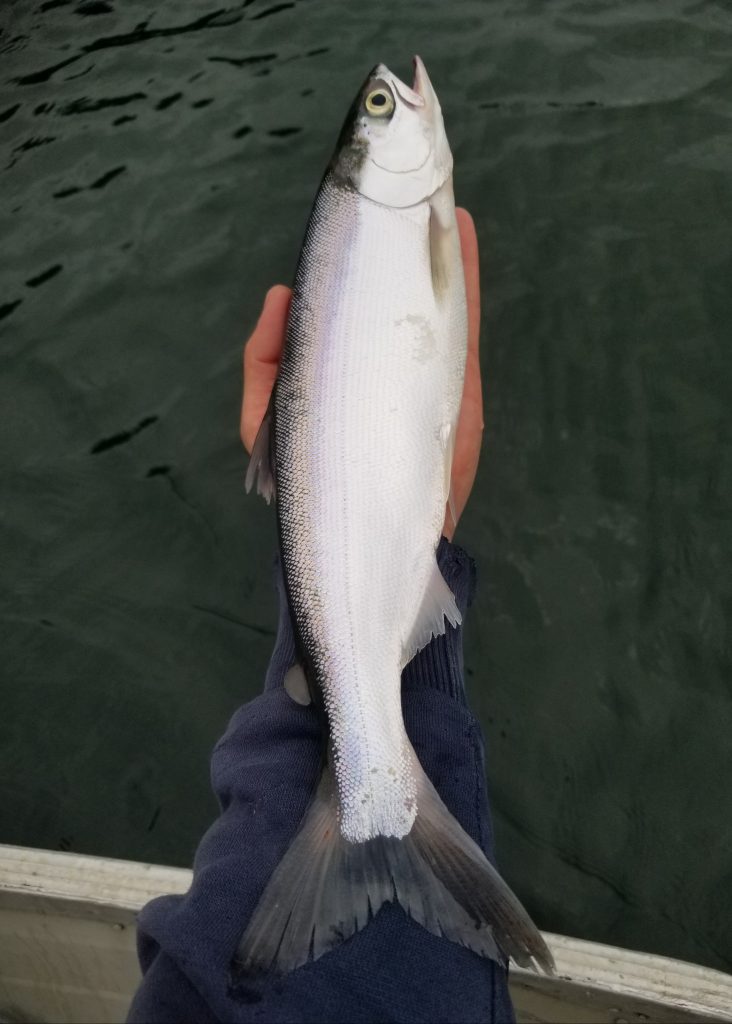OUTLOOK
It is a big week for announcements on the retail front. First up – Reel West Coast – Brendan Morrison’s fishing show has dropped merchandise and we have a great selection in stock! From hats, including youth hats, to buffs and dry bags we’ve got it all. Swing by the shop to pick up yours today or give us a ring at the shop and we can ship it out to you.
On the lake fishing front Phill Rowley released his new lake fishing book today and it is a doozy!
It has been in the making for over 2 years and it was worth the wait. It is rare we get this excited for books but this one is something special. Matt managed to get a copy a little early and he has been pouring over it for the last week. He has a great overview of it in this week’s Friday Fishing Report video. So, if you’re interested, be sure to have a watch of that. Call in now (604-872-2204) to get your name on a copy while supplies last! They are $51.95 and worth every penny! If you are a lake fly fisherman you should not miss it.
Speaking of announcements, saltwater chinook regulations are also on our radar. We have been waiting patiently for the last couple weeks with rumours floating around that an announcement is imminent. It could be this afternoon, so we will send out a special email blast on that as well as post updates on our social media feeds.
On the fishing side of things, we have some cool stuff this week as well. Alex has a post spawn bass report because that is something you will want to understand and look out for over the next three weeks locally.
Taylor has a kokanee primer. He is an avid kokanee angler and he has some great simple tips if you want to tackle this fishery and also on the local front, we have a little bit of info on locally stocked lakes.
Sterling has an interior lake update – thanks to those that are lucky enough to be based in the interior right now for sharing updates and reports for us.
If you want to check out the report in video format Matt has a bunch of info on all the fisheries, a review of Phill Rowley’s book, some amazing clips of lake fishing and some funny saltwater clips. Check it out here:
CLASSES AND COURSES
Introduction to Fly Fishing
This course is specifically designed to give the new fly fisher the basic knowledge, casting skills and fly fishing strategies to effectively fish our local BC waters. The course is comprised of two sessions; a 3hr evening seminar and a 3hr casting session. The dates below show the seminar date first and casting date second.
Dates: Jun 16 & 20, July 14 & 17, Sept 21 & 26
Cost: $150.00
Seminar Time: 6:30pm – 9:30pm
Casting Time(s): 10am – 1pm or 1:30pm -4:30pm
Introduction to Fly Fishing Lakes
This course will give you an in-depth look at the fundamentals of fly fishing lakes. We explore equipment, techniques, major insect hatches and ideal lakes to begin with. You will learn all you need to plan your next successful lake trip to one of BC’s 5,000 lakes! This course is comprised of one 3hr evening seminar.
Date: Tuesday, May 25
Seminar Time: 6:30-9:30 pm
Cost: $50 per person
FRESHWATER FISHING REPORTS
Capilano Fishing Report
This time of year, we start hearing about the first early Capilano coho. They are the first run of coho to hit the local waters and as expected, this week we heard about a few lucky anglers who managed to hook up.
It is not “go time” yet but it could be worth an exploratory trip if you are looking to get out this weekend.
It is almost counter intuitive but the first fish are usually caught in the upper river. This is because water levels are good for them to move fast from the ocean. Later in the season, when water levels get low, we will see more fish being taken off the Ambleside beach area.
Float fishing roe is the most popular early season technique but small flies on a sinking line in the upper pools can also be very effective early in the morning. We have Andre’s cap bugger in stock as well as a couple of other flies specifically designed for this system. Come down to the shop and we will talk you through the strategies.
Matt Sharp
STILLWATER FISHING REPORTS
Post Spawn Bass Fishing
Spawning season is upon us on our local bass lakes. With water temperatures consistently hitting 60 degrees or more we are seeing bedding activity. Bass typically spawn in waves, though while this does increase the length of time the spawn takes for completion for a specific population, it is still a relatively short window. In the coming weeks we will find Bass coming off the spawn and into a period we call post-spawn.
Post-spawn fishing presents a few challenges but also a couple of exciting opportunities. In short, during this phase the eggs have been deposited and the female will only hang out for a short while before dropping back into the refuge of deeper water. There, she can recuperate and gain her bulk again. During the beginning of this transition, these big bass can be hard to catch, but a switch will turn on suddenly and they can be coaxed into eating a meal while they are on the mend. Keep in mind that these are the largest bass in the pond and as such need a lot of food, so this is when you can target them with large baits like swimbaits, spinnerbaits, and large jig/craw combinations on secondary points. Alternatively, they may also be suspended off of main points or transitions and this is when combing them out with a bluegill, baby bass, or trout coloured crankbait can be highly effective. The difficult part of locating these fish is finding that piece of structure or transition they are on. Remember, they will most likely be off deep at this point so you can’t use any visual cues. As such, electronics on your boat are a must.
Now what about the male bass? These little guys stay up on the beds and guard them with their life and will continue to do so for a bit after the fry have hatched. They are subsequently extremely aggressive and can be easily caught if you pass something close by. During low light conditions, they will readily take topwater lures like frogs and poppers. In the middle of the day, slow your presentation down a touch and get down to them with worms, craws, swimbaits…anything that could potentially pose a threat.
If you need any help getting started on this fishery come on in and talk to us to get geared up.
Alex Au-Yeung
Kokanee Fishing Primer
We’re well into May, and that means that the kokanee fishing in our area will be picking back up. Now that water temperatures are rising, kokanee will be schooling up and starting to aggressively seek out the thermocline, so targeting them should get a lot easier, especially for folks who prefer to troll for them… once you find one school, you can be fairly confident that every other school will be at roughly the same depth. Having a decent fish finder and downriggers can make all the difference when trolling for kokes, because they are very temperature and depth sensitive, with a strong preference for water between 10-13 Celsius, and will aggressively seek out these temperatures in a lake. Once they find these temps, they will stick to them for the whole season, moving deeper or shallower as necessary.
As mentioned, downriggers and fish finders are a massive asset when trolling for kokanee. The fish finder tells you exactly how deep the fish are, and the downriggers put your gear at that exact depth. You can troll for kokanee with divers or in-line weights, but these are much less precise. Kokanee don’t like moving up or down to chase gear, so if the fish are at 45 feet and your gear is at 40 or 50, you probably won’t have much luck. Kokes also like flashy gear, much like sockeye, so dodgers, gang trolls or mini-flashers are very useful… almost necessary. Trolling speeds will vary; I’ve had luck trolling anywhere between 1.9 mph and .9 mph, depending on what gear I’m running. Speaking of gear, kokanee aren’t too picky. I’ve had luck trolling mini-hootchies, small spoons, wedding bands, small flatfish, Apexes, and even small flies… kokanee are biting out of aggression, not necessarily to feed. I will say, however, that I’ve always had the best luck on pink, chartreuse, or orange lures.
Don’t have downriggers or a fish finder? You can still anchor up and jig for kokes. Of course, a fish finder is still helpful here because you can easily find how deep the water is and where the fish are, but they aren’t strictly necessary. Just anchor up in a promising spot and drop a piece of bait like krill, salmon eggs, corn, or shrimp… and wait. If that’s too boring, you can drop a small spoon or jig and slowly jig away until something happens. I find this particular method to be very boring, so I prefer to troll, but it can be very effective at times… especially early in the season.
Kokanee are very tasty fish, and average about 11-14 inches in the Lower Mainland. However, they DO NOT handle catch and release well and often suffer a mortality rate greater than 50%, so I strongly recommend only fishing until you have retained your limit… there’s no real point in trying to practice catch & release when more than half of the fish you release will die anyway. Kokanee also have very soft mouths, so I usually advise the use of a trolling snubber or a soft, slow action rod to absorb a lot of the jarring forces involved with fighting a fish. Don’t play them too hard, or you’ll just rip hooks out of their mouths. When retaining them, be sure to bleed them promptly and get them on ice as soon as possible, as they tend to spoil very quickly. I find mornings to be the best times to fish for kokes for a few reasons… temperatures are more bearable in the summertime, the fish are usually a bit more “bitey”, and the water-skiers, wake-boarders, and other “recreators” are usually still in bed, sleeping off their hangovers from the previous night.
Fishing for kokanee is one of my favorite Spring/Summertime activities. It’s a lot of fun… almost like a scaled-down version of trolling for Salmon in the salt, and you get to take home some great eating fish. Be sure to check regulations on your specific lake before you head out, and be mindful of the fact that a lot of our kokanee lakes also have populations of other fish that may or may not be open for retention, so be sure to properly I.D. your catch before you take it out of the water.
Taylor Nakatani
Interior Lake Fishing Report
For those of you lucky enough to be in the interior, this report is for you! We’re starting to hit that window where size 12-16 chironomids are in full force throughout the interior, especially in Merritt and Kamloops. The majority of lakes that are below 1000m elevation have had great hatches with the fish really keying in on chromie and anti-static bag (ASB) patterns. Most of the fish have started pushing into that 20 ft depth where they feel the most comfortable and will continue to feed around that depth until the summer doldrums hit. I’ve mentioned it in previous reports but, having a decent depth sounder is essential when learning how to chironomid fish. There’s really no guarantee that the fish will be feeding on the bottom or be suspended through the water column. Trout also tend to school in pockets and travel along feeding avenues meaning that no fish may be below you even though your buddy 50 feet away from you is hammering them. It seems drastic but that’s the reality of chironomid fishing sometimes. The Hook Reveal series is a great depth finder for those on a budget.
Highway 24 is a little more volatile when it comes to chironomid hatches. We probably won’t see consistent size 12-16 chironomid hatches for another week or two depending on the lake and elevation. Most lakes won’t see consistent hatches until a good month after ice off meaning that buggy leech patterns and blobs are going to be your go-to patterns for the next little while. The majority of lakes won’t have established weed beds meaning that fish are looking for both the warmer and well oxygenated areas. Look for the common obvious signs like jumping and rolling fish to give you an indication of where to start. I swear by the ‘three rolls in five minutes’ rule, which is basically exactly what it sounds like. Move to where the fish are if they’re giving you sufficient reason to do so no matter how great that one spot was the year before at the same time.
I’d also highly recommend checking out the new book put together by Orvis and Phil Rowley if you’re curious about how to set-up your leaders for either deeper chironomids or shallower angling. It goes over all the set-ups in both a beginner and advanced manner and showcases the best knots to build the perfect rigging. I’ve had a chance to take a bit of an early sneak peek and was blown away by the number of tips and tricks, as well as the level of detail put into each section. It will be a great resource to have when you’re on the water or at home base as a refresher.
Sterling Balzer


